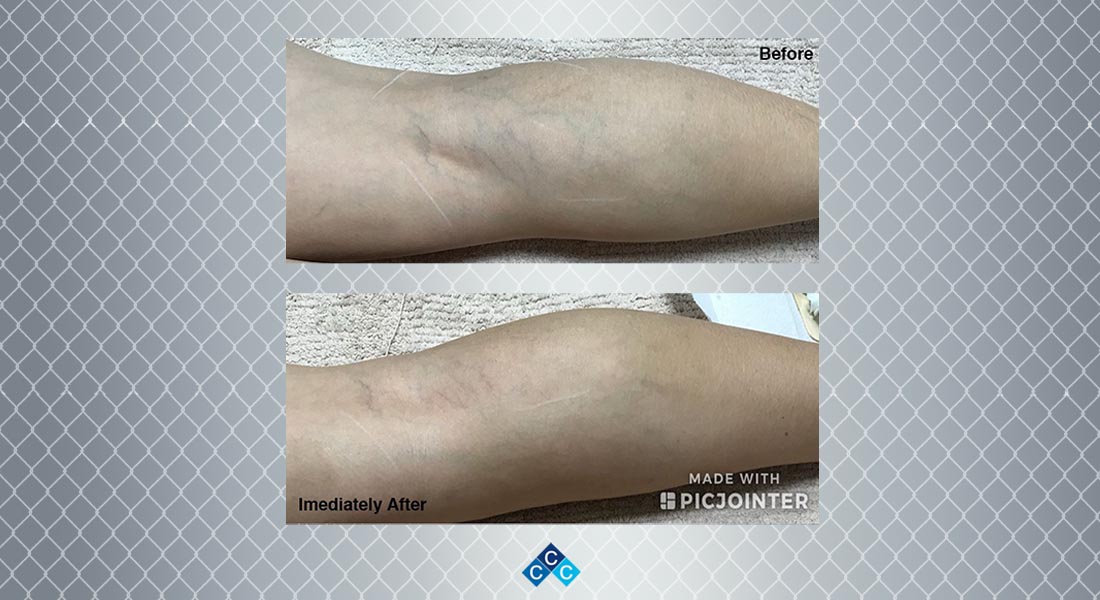Do you have spidery-looking marks on your face, nose, legs or anywhere?
Broken Veins & Their Causes
It’s a broken capillary. Your blood vessels are burst out giving out that scary looking skin. Simply put, veins & capillaries for face are actually broken capillaries that could be on your face or legs most probably. It happens because of many reasons. The most common ones are:
- Sun exposure
- Rosacea
- Alcohol consumption
- Weather changes
- Pregnancy
- Genes
The good thing is that it goes away. It’s a curable with the right cosmetic treatment. You get rid of it permanently.
First, you should ask-is it really a broken capillary?
Not the internet, but the really qualified skin specialist should be contacted for officially diagnosing it.
What are broken capillaries?
Broken capillaries are really enlarged blood vessels just beneath the surface of the skin. They appear like tiny bright blood-red marks branching out in different shapes & directions.
What are their causes?
It’s an outcome of traumatized skin with too much of force or pressure. Capillaries are actually very flexible and elastic. But, they lose their ability to contract when dilated over and over. It’s like expanding a plastic bag that makes it enlarged. However, genetics play a major role in causing it. The ones having more sensitivity, acne or rosacea are also its major victims.
Besides, there are some other causes like:
- Hot showers
- Exercising
- Drinking alcohol
- Eating spicy foods
- Being in cold or wintry air
- Excessive force on blood vessels
Does any home remedy work in this case?
Sadly, there is very small silver lining for curing it permanently at home. Over-the-counter products that have anti-inflammatory properties like rosehip oil can reduce redness. Even, applying a layer of pomegranate oil may also show some good signs by minimizing that redness. But, these home remedies can never prove a complete healing ceremony. It’s better not to expect a miracle to happen.
Some doctors also prescribe topical creams that can repair the blood vessels in your face by limiting blood flow and inflammation to the area. But, these all tricks are not going to make much difference to the condition. These are some short-term fixes that need reapplication almost every day.
What is the treatment for capillaries?
Lasers for vascular lesions or broken capillaries can permanently cure it. The laser is penetrated in a controlled manner to heat up the blood inside of the vessels. It causes inflammation and scarring within them that ultimately removes them over the 4 to 6 weeks.
The heating sensation is bearable and it hardly takes a few minutes to carry out this procedure. You feel like a rubber band snapping on your skin.
A laser called the Excel V Cutera is a standard treatment for it. The IPL or Intense Pulse Light treatment can also be opted in, as it’s effective on the capillaries and veins of face.
The darker skin may possibly harm your face. So, try to consult the professionally trained and clinically proven skin specialist or cosmetic doctor. They use Nd: YAG laser for treating dark toned people.
How much does its treatment cost?
You may have to pay anywhere in between &150 to $500 per treatment in Australia. It’s certainly a pricey treatment, but the difference is certain.
However, you may negotiate for the pricing.
Tips to keep them from coming back
These tips are must, not a choice. You should have to:
- Apply sunscreen, as the UV rays weaken your capillary walls. Wearing it on can help you to prevent it from happening again.
- Use gentle exfoliants, as a harsh scrubbing experience can do nothing good, but harm a lot. Rather, opt in for the exfoliator that your doctor recommends. He mostly advices for acids that gently dissolves dead skin cells, oil and grime from your pores.
- Avoid the hot water bath or shower, as it may increase the risk of getting it back. It is simply because the hot water on the face speeds up the flow of blood and expands the size of capillaries. As a result, the skin becomes red. Try to keep yourself away from the direct blast of the hot shower stream.
